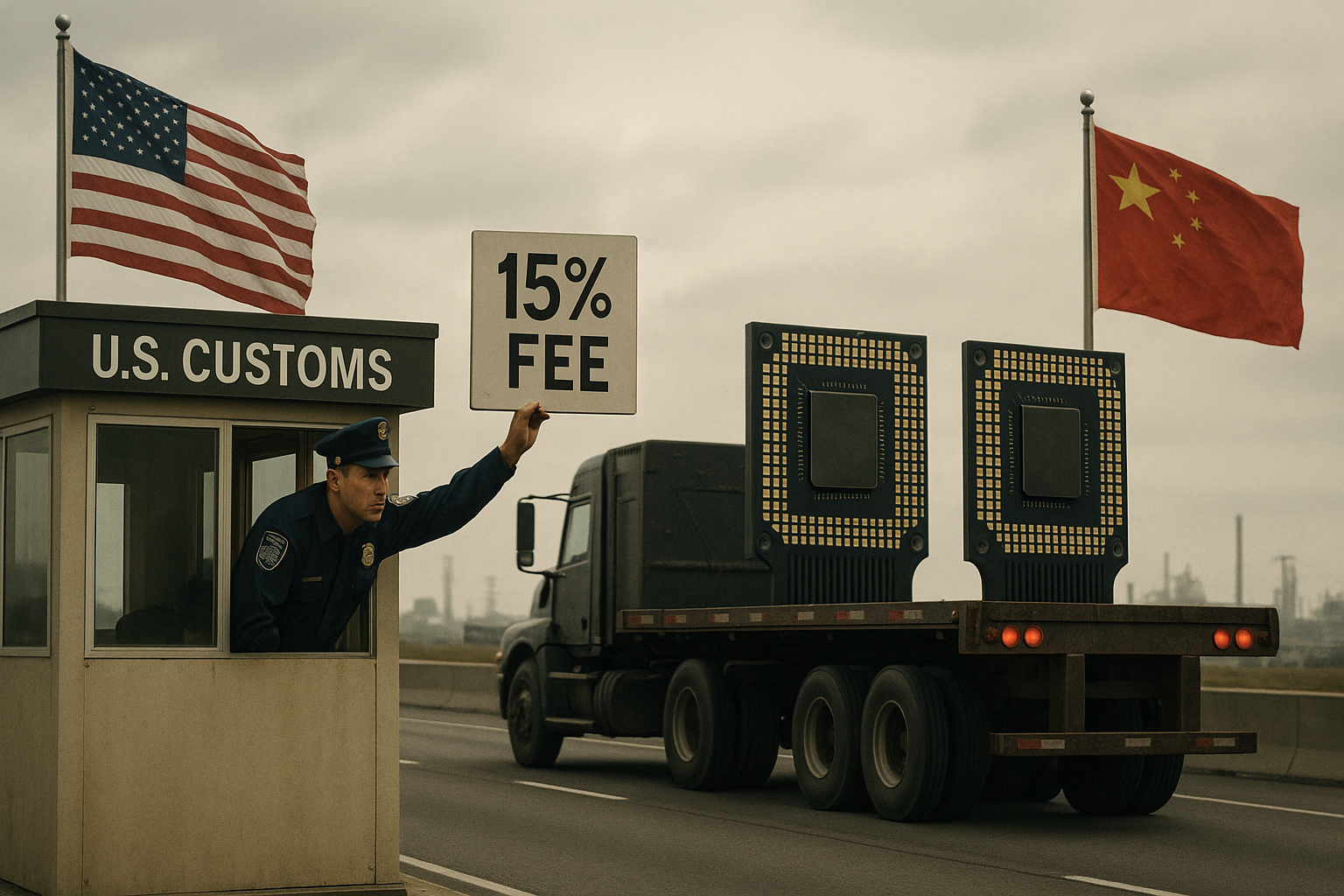The Biden administration has come up with a fascinating approach to Chinese access to advanced semiconductors: turn potential national security threats into a revenue stream.
According to recent reports, rather than outright banning the sale of certain Nvidia and AMD chips to China, the administration will slap a 15% fee on those transactions. It's a decision that leaves me scratching my head.
I've covered U.S.-China tech relations since 2019, and this move feels like someone trying to have their cake and eat it too.
Let's be honest about what's happening here. Either these advanced semiconductors pose a legitimate national security threat in Chinese hands – in which case no amount of money should make them available – or they don't, in which case... why the special tax?
The approach reminds me of those medieval indulgences sold by the Church. "Yes, selling these chips is technically a sin against national security, but pay us 15% and all shall be forgiven." At least the Church claimed the payments demonstrated contrition. What's the justification here beyond filling government coffers?
"This creates some perverse incentives," a semiconductor industry analyst told me last week over coffee. "The Treasury Department wants revenue while the Defense Department wants security. Those goals don't always align."
Think about it. If chip sales to China start declining, does the security establishment celebrate a win while the revenue collectors mourn? Or does someone in government subtly encourage more sales to boost the take? (I reached out to the Commerce Department for comment but haven't received a response.)
Look, I understand the difficult balancing act. These semiconductor companies represent American technological leadership, and cutting China off entirely would dramatically impact their bottom lines. AMD and Nvidia shareholders certainly prefer this tax to an outright ban—the stock market has made that clear.
But there's something intellectually dishonest about the whole thing.
The 15% fee doesn't actually mitigate any security risk. The same technology still ends up in Chinese hands! It just means Uncle Sam gets a piece of the action.
I spoke with three former national security officials who all expressed similar concerns, though none would go on record. One called it "securitized mercantilism" – a term I rather like.
There's another angle worth considering. By imposing a fee structure rather than a ban, the administration maintains flexibility. They can adjust the percentage as geopolitical winds shift. Perhaps that's the strategic logic – a tunable knob rather than an on/off switch.
But what happens to the money? Does it disappear into general revenue? Fund semiconductor research? Perhaps it will finance America's own AI initiatives, creating a somewhat elegant symmetry where Chinese purchases help fund U.S. technological advancement. Nobody seems to know for sure.
The history of tech trade restrictions is... complicated. They rarely work as cleanly as intended.
China will likely accelerate efforts to develop domestic alternatives, potentially cutting off this revenue stream anyway. It's the technological equivalent of a drug dealer raising prices – might increase short-term profits but also pushes customers to find new suppliers.
In my conversations with semiconductor executives (off the record, naturally), they seem relieved they can still access the Chinese market, even with this governmental tollbooth installed.
Sometimes national security requires binary choices. Other times, apparently, it's available at a 15% markup.
Welcome to 21st century geopolitics, where even existential threats come with a price tag.
